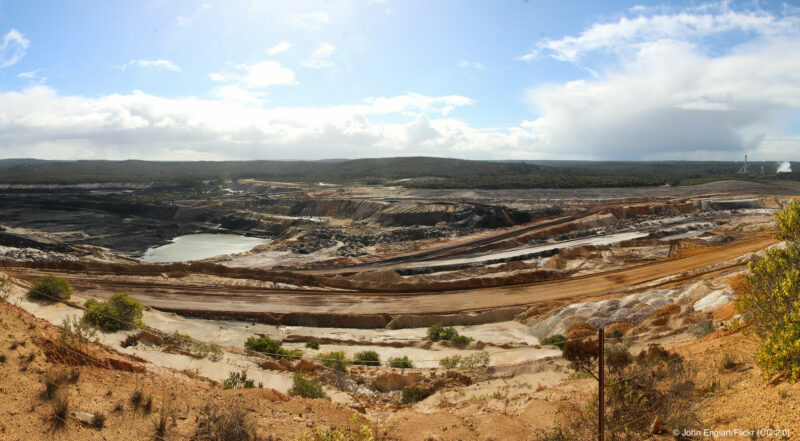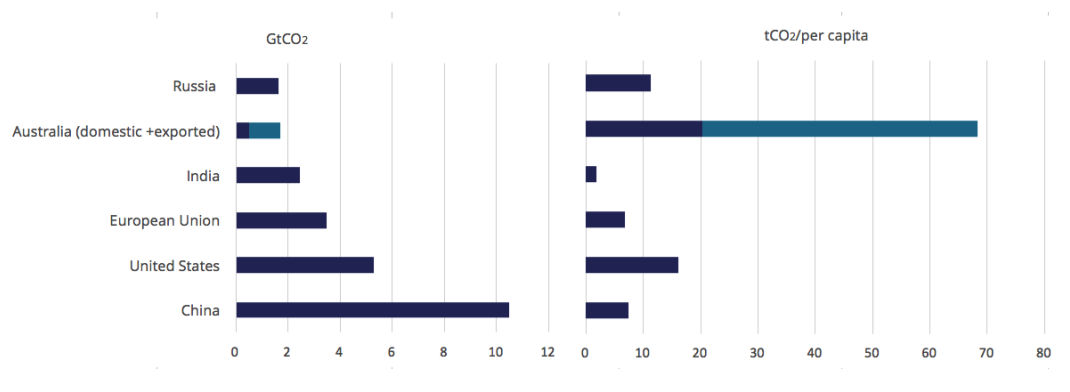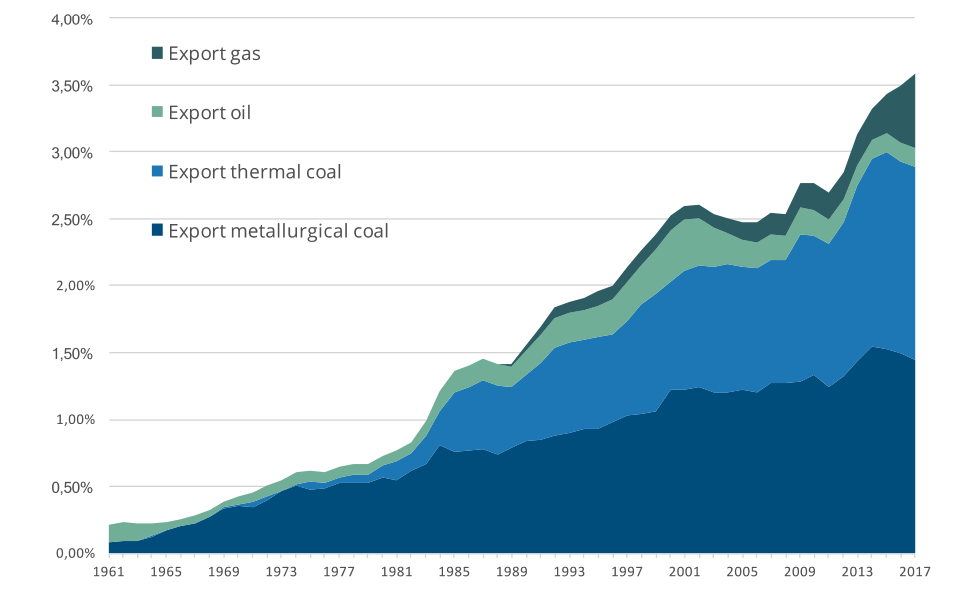Australia on track to become one of the world’s major climate polluters
Share

When emissions from Australia’s current coal, oil and gas exports (3.6% of global total) are added to domestic emissions (1.4% of global total), Australia’s contribution to the global climate pollution footprint is already about 5%. That’s equivalent to the total greenhouse gas emissions of Russia, world’s fifth biggest carbon dioxide emitter.
Full report: Evaluating the significance of Australia’s global fossil fuel carbon footprint
Australia is the world’s top exporter of thermal and metallurgical coal, accounting for about 29% of global coal trade in 2016, and will soon be the world’s largest natural gas (LNG) exporter. As a consequence, Australia’s global carbon footprint is very significant, with exported fossil fuel emissions currently representing around 3.6% of global emissions. In 2017, Australian coal and gas exports produced around 2.9% and 0.6% of global CO2 emissions from fossil fuel combustion respectively.

Main CO2 emitters 2017 total and per capita (exported emissions added for Australia in light blue). Values in the left panel correspond to GtCO2 and values in the right panel are expressed as tCO2 per capita.
Australia’ per capita CO2 emissions are among world’s highest. On a per capita basis, Australia’s carbon footprint, including exports, is nine times higher than China’s, four times that of the US, and 37 times that of India.

Australia’s exported emissions 1961-2017 as share of global CO2 emissions from fossil fuels. Source: Climate Analytics’ calculations based on nationally reported quantities of fuels consumed domestically and exported, national inventory emissions factors, and global CO2 estimates from the Global Carbon Project.
The results of this analysis show that if current government and industry projections for fossil fuel exports are realised, Australia could be responsible (including both domestic and exported emissions) for about 13% (between 11.9% – 17.4%) of Paris Agreement compatible global CO2 emissions in 2030. By far the largest growth would be coming from coal exports.
More on Australia’s climate policy:
Australia Climate Policy Factsheets
Australia’s pollution profile and how to turn it around
Australia’s industry – inefficient and standing still
Australia’s vehicle fleet – dirty and falling further behind
Australia’s power supply: brown and polluting
CONTACTS
Paola Yanguas Parra, paola.parra@climateanalytics.org, +49 157 82875700
Bill Hare, bill.hare@climateanalytics.org, +49 160 90862463
Communications officer: Ela Smith ela.smith@climateanalytics.org +49 152 56124061











